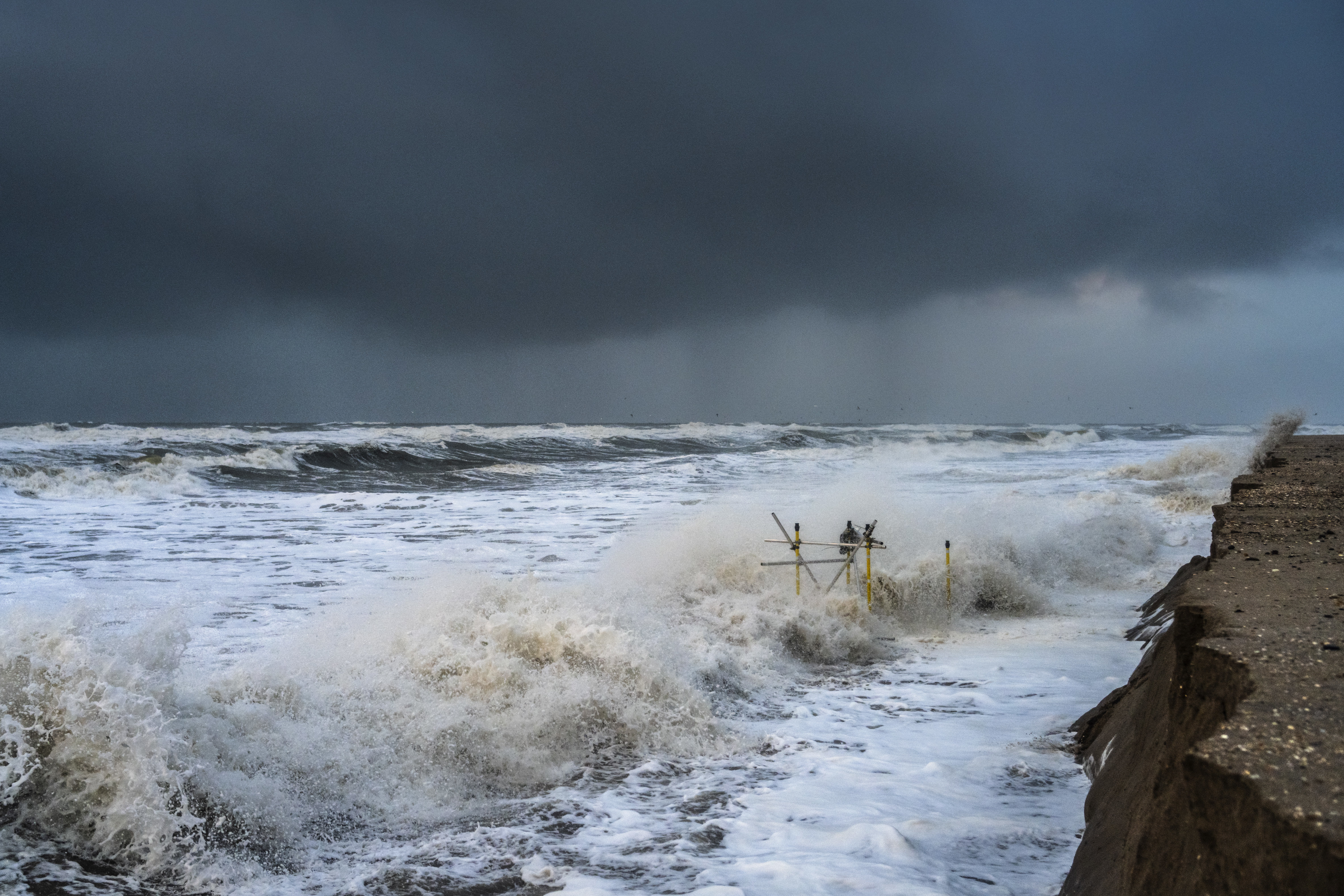RealDune – Dune erosion during storm surges
Dune erosion during storm surges can lead to excessive damage to the dune system with devastating floods as a potential consequence. 254 km of the Dutch coast consist of areas where dunes act as the primary sea defence. To ensure the safety of the hinterland, these dunes have to meet the strong safety requirements laid up by the Dutch government.
The current safety assessment uses an empirical equilibrium model called DUROS+ to compute total erosion volumes for the design storm conditions, which are conditions with a storm surge water level of around 5 m, and waves of 7-9 m high and 12 – 18 s long, depending on where you are along the Dutch coast. DUROS+ is based on one-dimensional flume experiments, in which a coastal profile was built within a physical model and exposed to the storm conditions (Vellinga (1986), van Gent et al. (2008)). However, flume experiments do not always offer full closure to the understanding of all relevant processes, e.g. (1) natural conditions are not fully represented within laboratory settings, (2) scale effects might distort experiment outcomes, and (3) 2DH effects such as wave directional spreading and wave obliquity cannot be included.
The goal of the RealDune project is to study dune erosion through large scale field experiments to gain more knowledge on dune erosion. From November 2021 to January 2022, along the Dutch Coast near Kijkduin, two artificial dunes were constructed along the high water line and exposed to three storms with different wave conditions to acquire new insights on relevant 2DH effects, such as wave obliquity (Figures 1 and 2). In September 2022, two open shipping containers were placed on the beach as a ‘coastal wave flume’ to study the effect of differences in sediment grain size through multiple experiments (Figure 3). Inside the containers, dunes were constructed with different sediment grain sizes.
The main research subjects of the project are:
- The effect of wave obliquity on dune erosion
- The temporal behaviour of the dune face during storms
- The effect of sediment grain size on dune erosion
- The capability of dune erosion models to predict the erosion quantities measured in the field.
Partners
- Rijkswaterstaat
- Stichting Toegepast Onderzoek Waterbeheer (STOWA)
- Technische Universiteit Delft
- Het Topconsortium voor Kennis en Innovatie (TKI) Deltatechnologie
- Deltares
- Arcadis
- Witteveen+Bos.
Contact
If you have any questions about the RealDune project, please contact Paul van Wiechen (p.p.j.vanwiechen@tudelft.nl). The project is supervised by Sierd de Vries (Sierd.deVries@tudelft.nl) and Stefan Aarninkhof (S.G.J.Aarninkhof@tudelft.nl).





